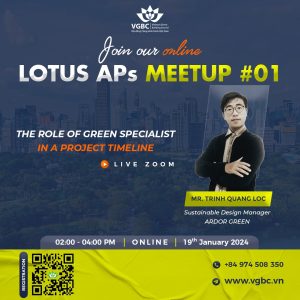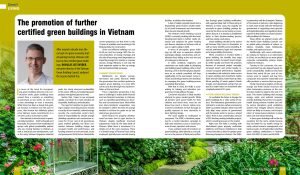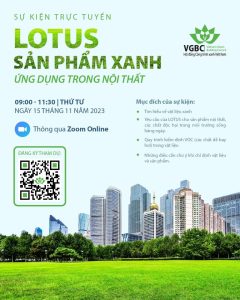ABOUT US
Established in 2007, our purpose is to facilitate the sustainable transformation of Vietnam’s built environment into one that is future adapted for people and planet.
MAIN ACTIVITIES
Certify Green Buildings
We create and manage the various LOTUS green building tools, Vietnam’s most comprehensive, voluntary, international & local rating system.
Collaborate With Our Partners
60+ members, development institutions, universities, and others enable the us to follow our mission and achieve critical sustainability goals for Vietnam.
Educate The Market
We educate investors, developers, designers, manufacturers, and government practitioners to make informed decisions to best optimize construction projects for both the environment and people.
Build Market Development Tools
Our LOTUS Green Product Label, featured in our online database, helps clearly identify sustainable construction products, equipment, and systems for projects to select to ensure green performance.
Support Policy Development
As an active member of the World Green Building Council’s Global Policy Steering Committee we continue to build partnerships with relevant government agencies and institutes to share the most recent advances in global green building policy to support productive alignment.
OUR INDUSTRY
Since our beginnings, we have represented 200+ marketing leading firms committed to a sustainable built environment. Our members make up a diverse cross section of stakeholders in the construction market, including investors, developers, manufacturers, designers, educators, researchers, institutes, and others. The buildings industry is complex, requiring cross linkages across disciplines, so our rich member diversity helps build strong and productive ties between different segments.
WHAT IS A GBC?
Today, there are 75+ green building councils (GBCs) across the globe, one per country, with each serving to promote the development of sustainable construction in their national context. Every GBC is a formal member of the World Green Building Council (WorldGBC), based in London, UK, which helps provide global priorities for all GBCs to carry out in their respective countries. Most GBCs are non-profit organizations that carry out similar activities, such as using international principles to create the most suitable green building rating systems for their national contexts, educating market stakeholders, hosting organizational members, and supporting government policy development. The Vietnam Green Building Council (VGBC) is part of the WorldGBC’s Asia Pacific Network (APN) of 16 GBCs in the region. We all work together to advance sustainability in a harmonized way throughout South and East Asia.
For more information on the WGBC, please click HERE.

HISTORY
The Vietnam Green Building Council (VGBC) was first conceived in 2005 with an aim to raise awareness and build capacity for the development of green building in Vietnam. Key founding members included Hanoi architect Le Cuong, journalist and consultant Tran Tuong Nhu, and the Green Cities Fund (GCF) founder Tom Miller.
In 2007, VGBC’s business plan was endorsed by the World Green Building Council (WorldGBC) and RMIT University of Melbourne, Australia, funded the councils first training event and research on Sustainable Climate Change Adaptation (SCCA). In 2008, the GCF and the VGBC received operations permission from the Viet Nam government, and Executive Director Jalel Sager addressed the annual national meeting of Viet Nam Association of Civil Engineering for the Environment (VACEE) on climate change, sustainable building, and SCCA. In March 2009, The VGBC was officially recognized by the Ministry of Construction of the Socialist Republic of Vietnam. Later that same year, the council also took part in the establishment of the WorldGBC Asia Pacific Network (APN).
In June 2016, the VGBC changed its legal entity status to a registered Vietnamese Social Enterprise (the Viet Nam Green Building Social Enterprise Company Limited/CÔNG TY TNHH DOANH NGHIỆP XÃ HỘI CÔNG TRÌNH XANH VIỆT NAM) led by a local board of directors to further its mission for a sustainable built environment for Viet Nam.
VISION & MISSION
VISION
A Vietnam with a healthy, resource efficient, and climate smart built environment.
MISSION
To facilitate Vietnam’s broad uptake of sustainable construction through education, partnerships, green finance, and verified green building certifications.

 Tiếng Việt
Tiếng Việt



